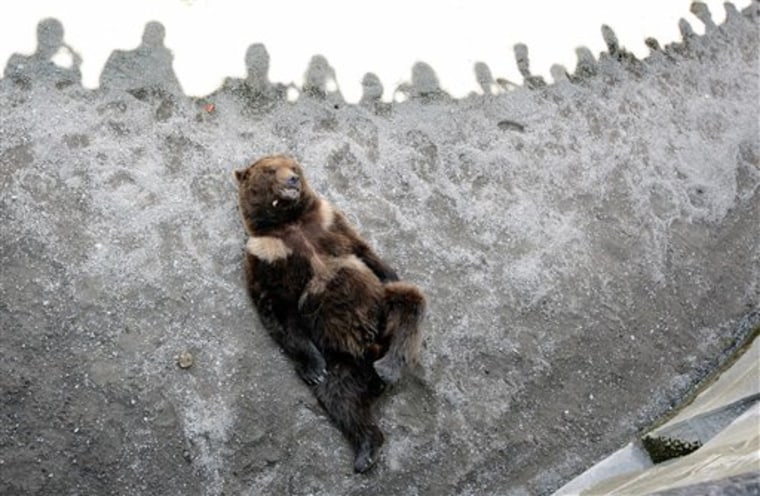Bern's Bear Pit, for centuries a tourist attraction and a symbol of the city, has lost its last resident to euthanasia and will be closed for good.
Pedro, a 28-year-old brown bear, was put to death Thursday, ending a tradition that had spanned nearly 500 years. The pit that housed the beasts giving the city its name will be replaced by a more bear-friendly park with access to the Aare River below.
"Pedro was suffering from a painful, incurable arthritis," said Bernd Schildger, the city's zoo director.
Walter Bosshard, Bern's bear keeper, urged people to "remember the ancient tradition of the Bear Pit and look forward to a new era that gives Bern and bear care a new face."
Bears have played an important role in Bern, which features the animal on its flag and coat-of-arms. The animals were plentiful in Switzerland until being hunted to extinction in the country about a century ago, and the legend of Bern has it that Count Berchtold V named the capital after killing a bear in the city he was founding.
Bern's Bear Pit dates back to at least 1513, when the chronicler Valerius Anshelm described the Bernese Army's return from a military victory with a living bear as booty. The animal was put in the defensive trench along the city walls.
A new pit was created in 1764 just outside the city's former limits, and as many as a dozen bears have lived in the 11.5-foot deep space more or less since then as the city has expanded around it.
Bonaparte ships bears home
The pit was empty for a dozen years when Napoleon occupied Bern in 1798 and shipped the city's bears to Paris. It was briefly empty again in 1853, when a family of French bears died out and new ones were imported, and during modifications in 1974-1975 when the bears were housed elsewhere.
While the Bear Pit has remained a ubiquitous feature of tourist guides, its allure had dimmed amid concerns from animal rights activists and the public that it offered the bears little dignity.
The city began studying how to make a better home for its bears at the beginning of the decade and construction on the new Bear Park started in 2008. It is scheduled to open in October and will stretch over 65,000 square feet from the current pit to the Aare River below, giving bears the chance to roam over a wide expanse of greenery and catch fresh fish from the water. A wall in the river ensures they will not be able to swim away or be carried away by the current.
Bosshard said two Scandinavian bears in Bern's Daehlhoelzli Zoo, Bjoerk and Finn, would move into the new park in October.
